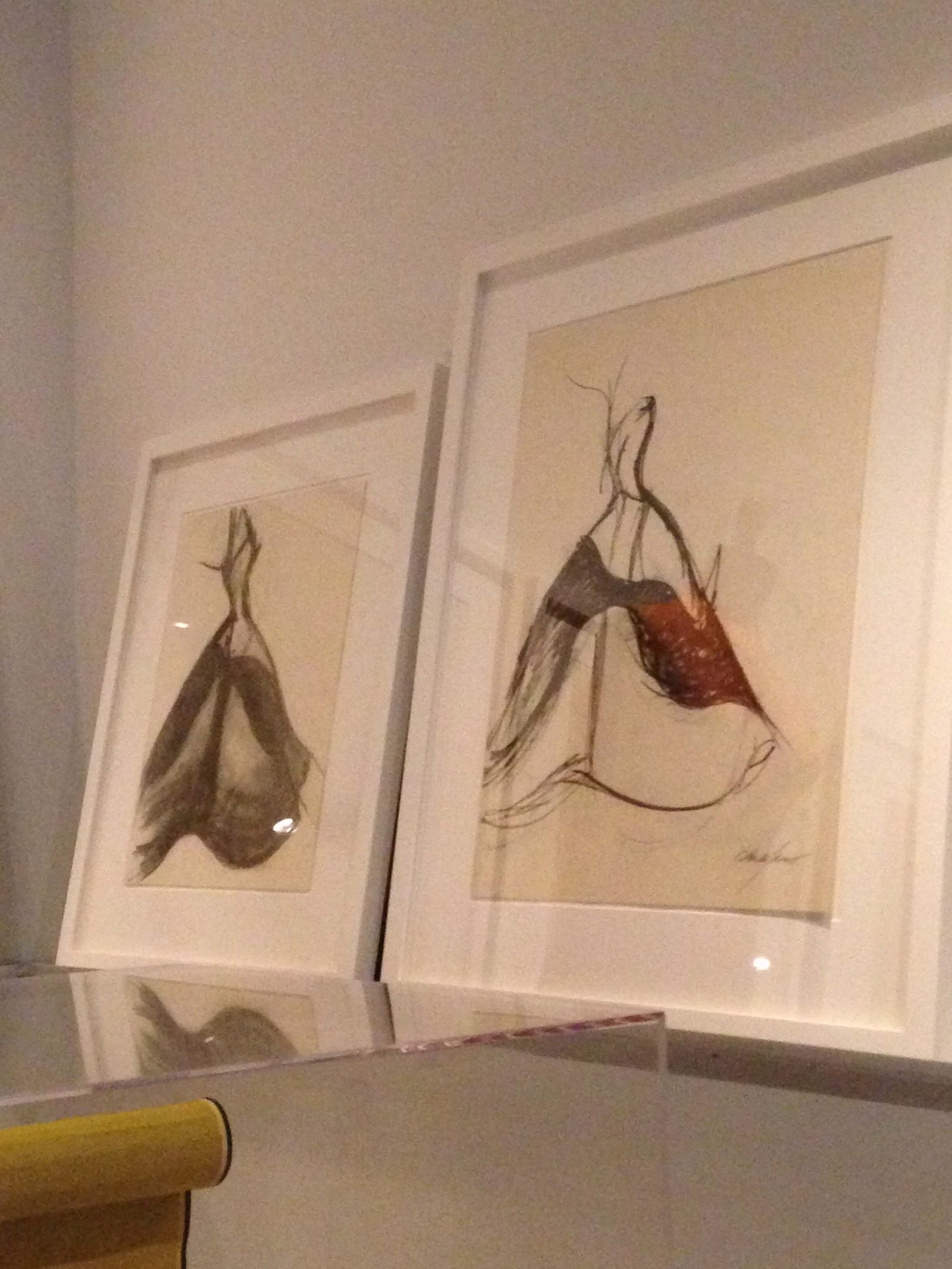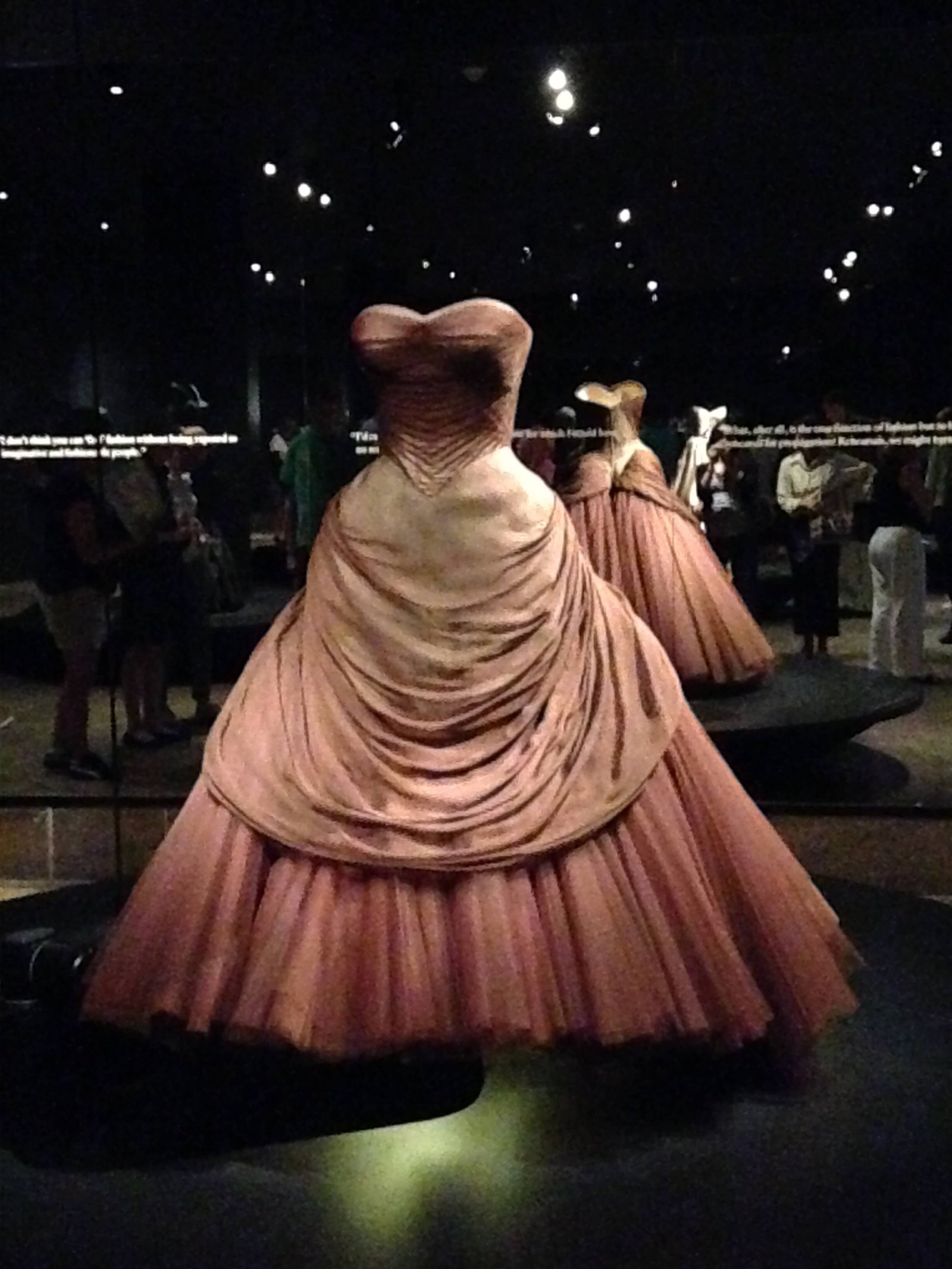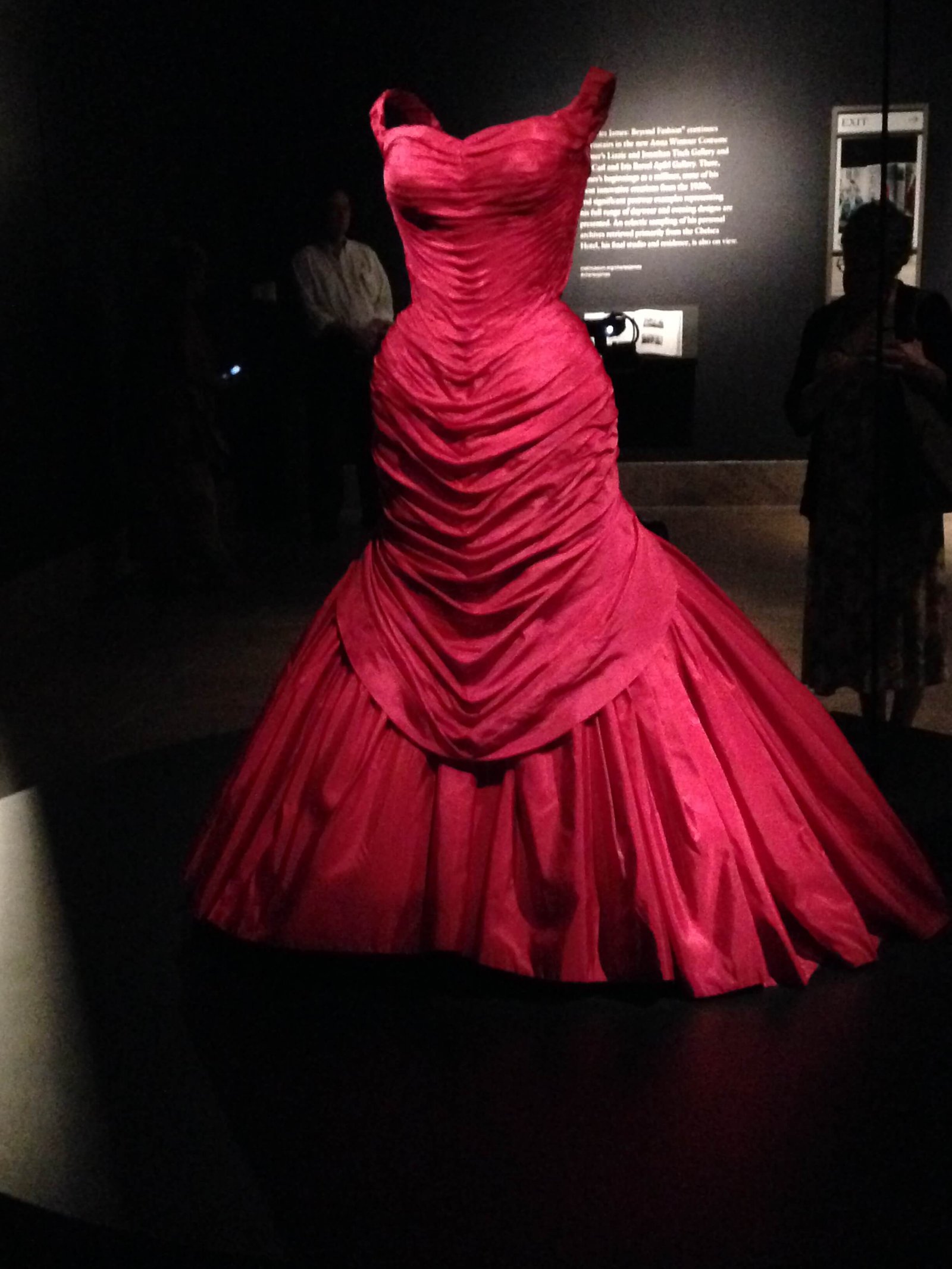
I have just returned from seeing Charles James: Beyond Fashion at the Metropolitan Museum of Art in New York City. This year’s installment of the Costume Institute’s annual blockbuster exhibition, the show presents the work of innovative and influential British-American fashion designer Charles James (1906-1978). A selection of James’s most stunning gowns, many of which came to the Met from the Brooklyn Museum’s costume collection in 2009, are displayed in a special exhibition gallery on the Met’s first floor. More gowns and other garments, along with sketches, photographs, press cuttings, and various memorabilia, are shown on the ground floor in the Lizzie and Jonathan Tisch Gallery in the new Anna Wintour Costume Center, which just opened this spring.
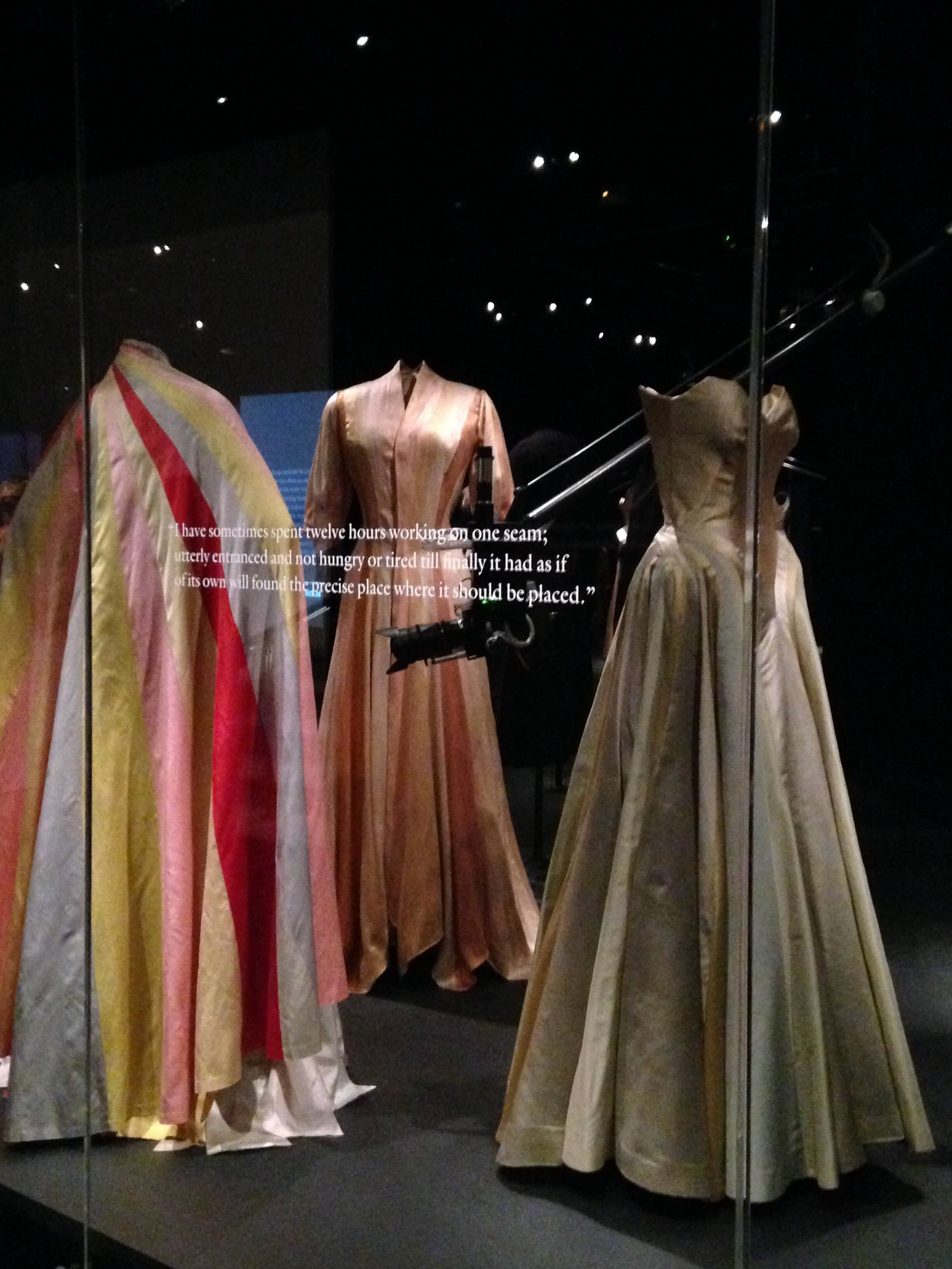
Charles James: Beyond Fashion is strongly focused on the structural aspects of James’s designs, exploring the ways in which each gown was constructed. In many cases, this was no small feat. James’s gowns have a very strong three-dimensionality to them, blending historical fashion, modernist sensibilities, and innovative techniques to create drapes, poofs, bustles, corsets, and voluminous skirts that seem to stand on their own without even needed a wearer. According to the exhibition’s introductory wall text, James himself “believed that his singular innovations lay in the actual structure of his designs – in their architecture and engineering”.
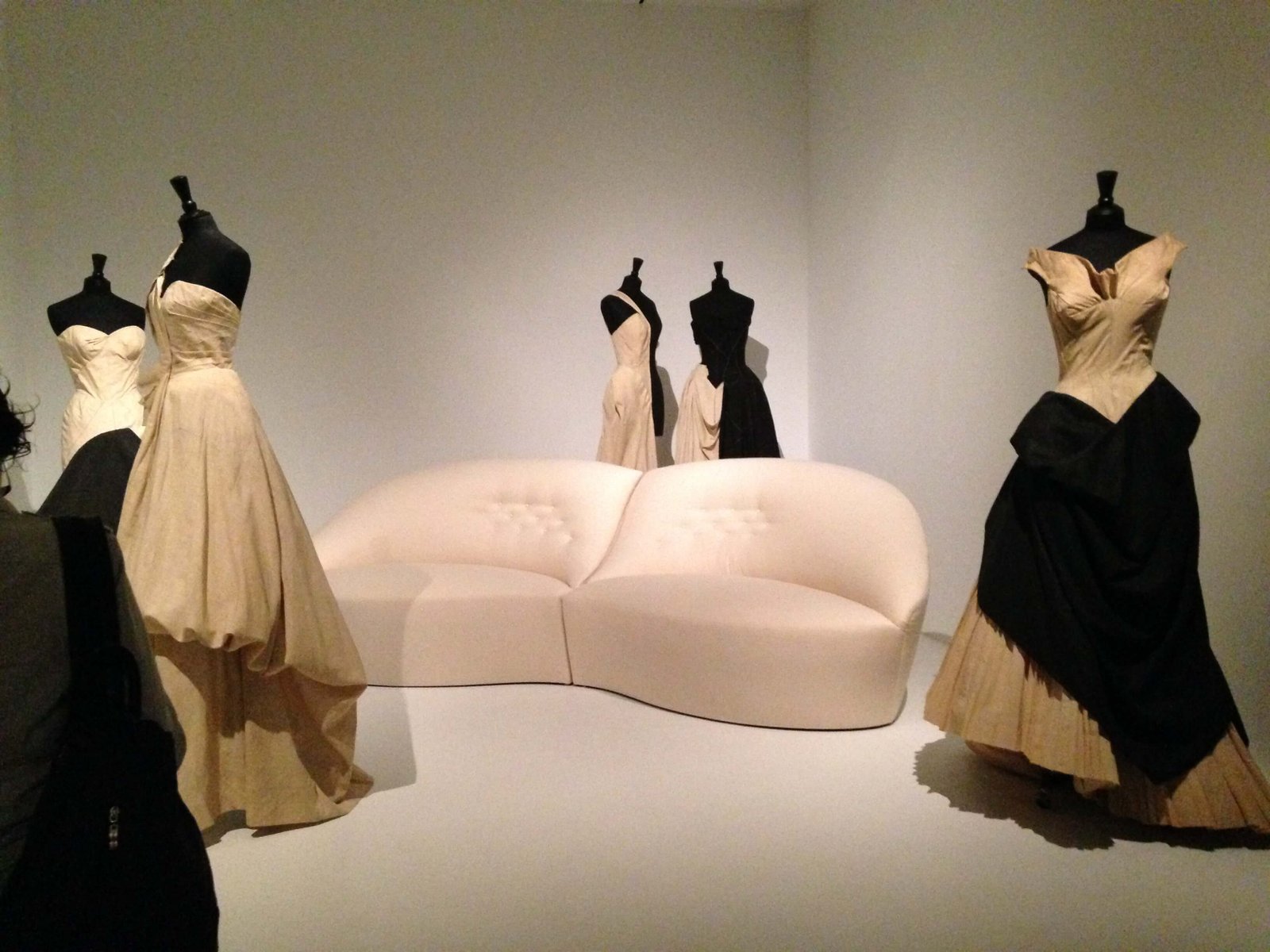
I have been a fan of James’s work since I purchased an illustrated catalog of the Brooklyn Museum Costume Collection when it first came to the Met in 2009. His gowns are very classy and timeless, yet they also feel inventive and at times a bit daring. I love the fact that the historical references are readily apparent but are adapted in such interesting ways that the finished products never feel old, even though they were made decades ago.
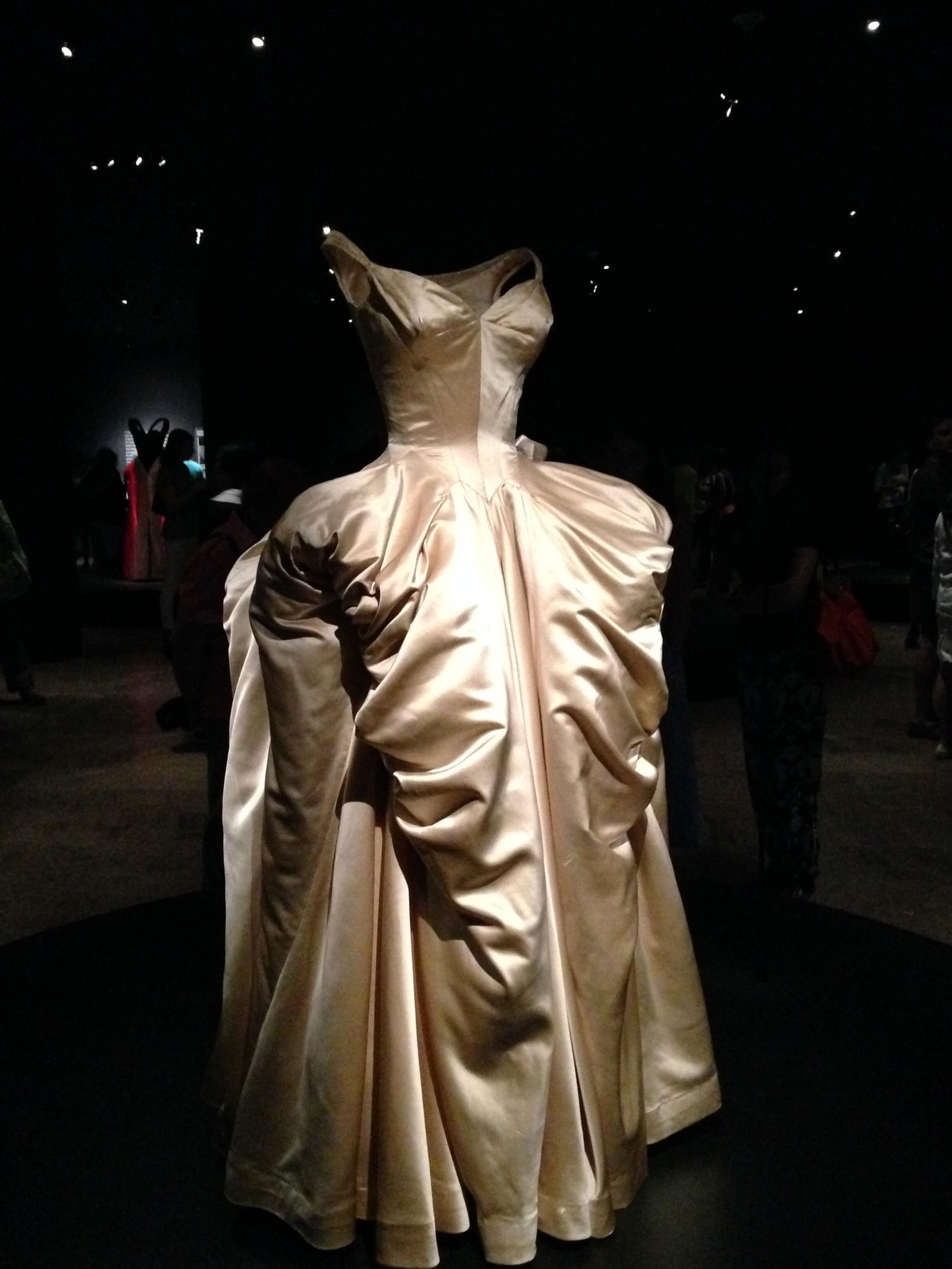
In service of this celebration of James’s technical prowess, the Met has employed some technology of its own. Each of the gowns in the first floor exhibition space is displayed on a wide, round pedestal with an embedded digital screen and attached mechanical robot arm. The screens display short videos that include three-dimensional renderings of gown construction from the inside out, details about fabric, James’s drawings, historical references, and vintage photographs of the gowns in magazines or on their original owners. Meanwhile, the robot arm moves up and down dresses, shining a beam of light on the aspect currently under discussion. This brings to mind Discovery Channel videos about the Great Pyramids more than anything typically seen in an art museum.
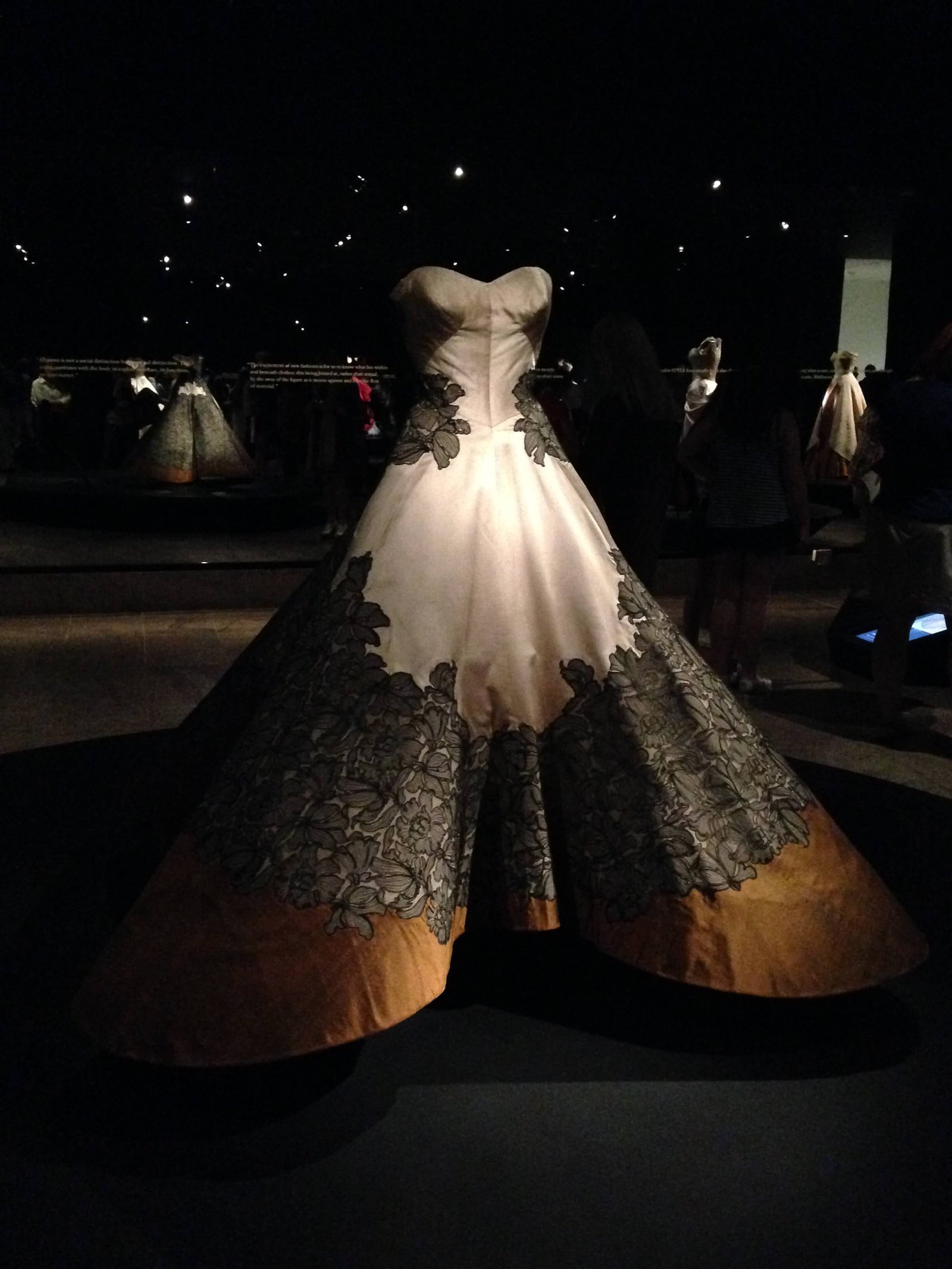
While the information presented on the screens was great, I wasn’t a big fan of the set-up. I am generally in favor of the use of new technology in the museum world, but I felt in this case that the technology pulled too much focus from the actual gowns. People stood around and stared at the screens while real masterpieces of couture were only a few feet away. Unlike with wall texts, which one can read as one’s own pace, you have to wait for the video to cycle through all its information, which it does rather slowly. Most of the time, I found it more enjoyable to ignore the screens and just look at the gowns, but I’m sure I missed out on some interesting information because of that. The robot arms were simply distracting, and I didn’t really understand the need for them. The lights were kept low, presumably to facilitate viewing the videos, but this made the dresses difficult to view. In fact, I thought one gown was red and black until I saw its photograph on a postcard and realized it was red and blue. Things were slightly better in the Costume Center portion of the exhibition, as there were only a few screens with information about select pieces, but the lighting was still a problem. In the primary exhibition space, the gowns were set on round pedestals and scattered throughout the room, making it very easy to view them from all sides. In the second space, visitors walked around the perimeter of the space while the clothing was clustered in the center of it. This single pathway got bottled up at each one of the screens, since people kept stopping to watch the entire video. I didn’t even bother through to push through the crowd to see these videos; I just walked around and looked at the real, physical clothing. After all, I thought that was the important part, but I’m not too sure the curators of the exhibition agreed with me.
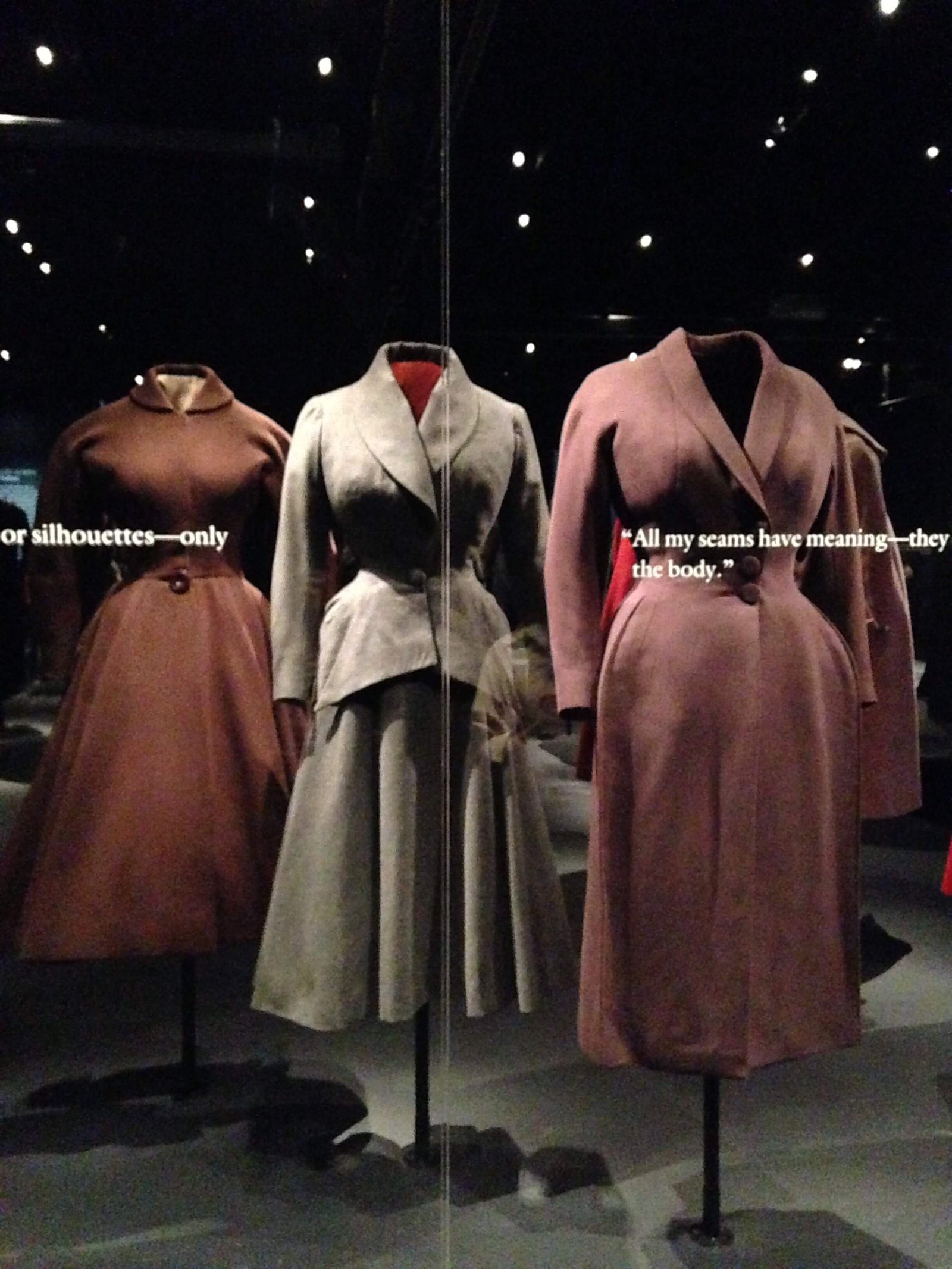
Charles James: Beyond Fashion was on view at the Metropolitan Museum of Art from May 8 through August 10, 2014. Check out the details online.
